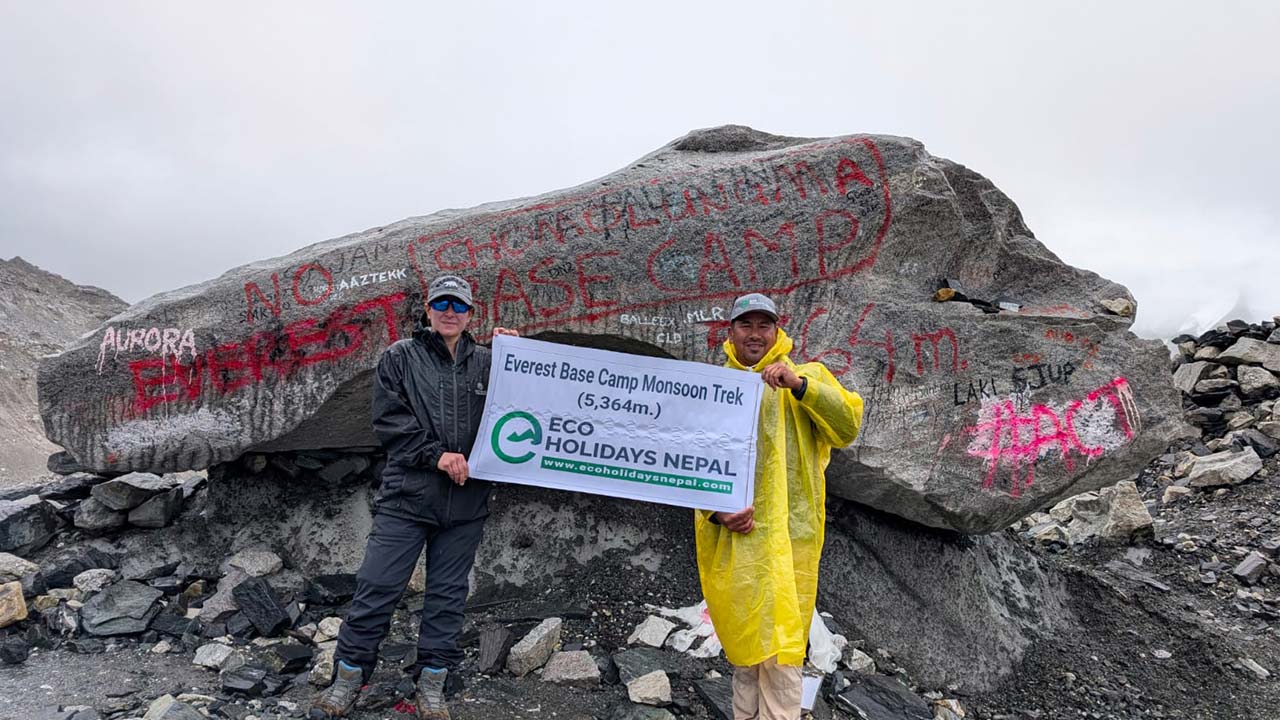Trekking in Nepal is often associated with crystal-clear skies, striking views of the Himalayan peaks and lush landscape. But there is another side to Nepal that is often overlooked and misunderstood, the monsoon season. This season lasts from June to August and during this period Nepal transforms into a lush and vibrant wonderland.
The hills turn greener than ever, waterfalls cascade down the cliffs and every corner of the trail hums in the rhythm of renewal. This is the true definition of a monsoon trek in Nepal, raw, wild and deeply rewarding. However with all the rain and greenery a less welcome companion also emerges on the trail, leeches.
These slimy and blood-thirsty parasites thrive in damp and shaded trails below 2,500 meters, especially in forest zones and muddy footpaths. While they are harmless, their presence often overshadows the beauty of the monsoon trek Nepal for many hikers.
But, here’s the thing, monsoon trekking in Nepal is absolutely doable and in many cases, they are surprisingly rewarding. There are many specific regions in the Himalayas like Upper Mustang, Nar Phu and Dolpo that lie in the rain-shadow region and receive minimum rainfall even during in core of the monsoon.
Some shorter treks like Mardi Himal also quickly climb above the leech-prone zones, offering you a solid escape into cleaner high terrain. And, even in the lush and greener lowlands, if you prepare well, leeches can be easily managed. Once you understand how they behave and how to protect yourself, they become just another part of the rainy season experience.
When is Monsoon Season in Nepal?
The monsoons in Nepal typically begin around mid-June and can continue until the early stretch of September. The arrival of the southwest monsoon winds from the Indian Ocean marks the start of the rainy season in this Himalayan country.
Monsoon season in Nepal marks for approximately more than 80% of the country’s annual rainfall. This period delivers the vast majority of the precipitation that Nepal receives across the year. The effect of the Nepal monsoon season is felt from the southern plains all the way up to the foothills of the Himalayas.
Unlike the harsh winter or dry seasons, monsoon brings life into every corner of the country. Rivers swell with rainwater, terraced fields and the overall landscape turn into a canvas of vivid emerald, and the forests burst with lush, humid greenery.
But, for trekkers, monsoons in Nepal introduce a new set of weather-related challenges. From the slippery trails, risk of landslides and flooding, to unpredictable weather and infamous Himalayan leeches, adventures need to tackle a diverse set of elements during a monsoon trek in Nepal.
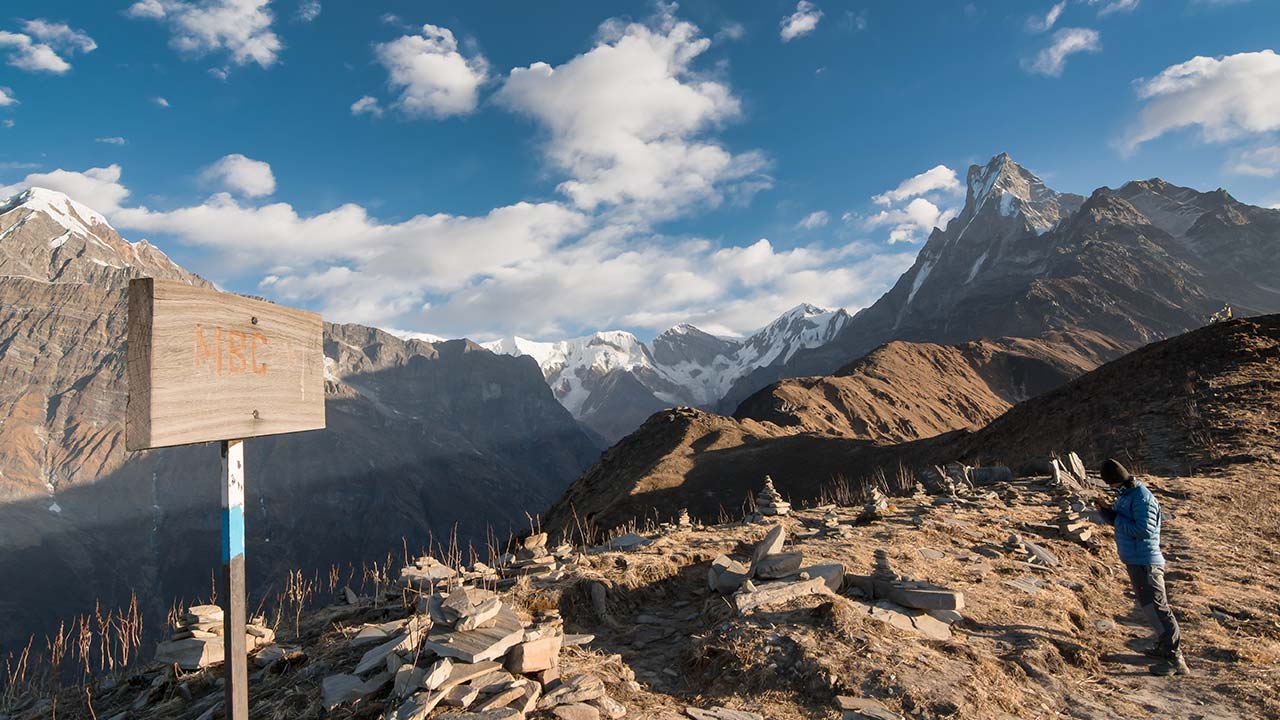
What to Expect During Nepal Monsoon Season?
-
Heavy Rainfall: During the Nepal monsoon season, the rainfall is intense and frequent, especially in the lower regions (below 2,000 meters). The central and eastern region of Nepal, like Pokhara, Chitwan, Illam and Arun Valley, experience some of the highest precipitation rates in the country. These sudden showers, often accompanied by thunder, can last hours. Thus, during the core monsoon period, there are risks of flash floods, trail erosion and transport disruptions.
-
High Humidity: The humidity levels during the monsoon season can reach maximum points, around 80-90% which is most noticeable in the Terai belt and regions below 2,000 meters. So, even if it's not raining, the moisture in the air makes everything feel damp and sticky. Sweating is unavoidable and a lack of proper airflow in dense forests can make uphill ascent feel more exhausting. Likewise, clothes don’t dry overnight and humid conditions are a playground for rashes, blisters and fungal infections.
-
Limited Visibility: One of the major drawbacks of the monsoon Trek Nepal is the lack of consistent mountain views. The dense cloud layers, fog and mist frequently cover the high peaks and skies during this season, especially during the daytime. There are only short magical windows, often after sunrise or before sunset, where skies unveil briefly to unveil the epic mountain vistas. For those chasing the views, this season may feel limited due to reduced visibility and poor lighting conditions.
-
Lush Greenery and Solitude: If there is one thing that monsoon does best, it turns the Himalayas into a living canvas of wild textures. This is the season when the jungle is thickest and the trails are lined with colorful and diverse blends of bamboo, ferns, wildflowers, lichens and moss. Unlike the peak seasons where the trails are often crowded, monsoon trekking offers serene paths, near-empty lodges and an opportunity to forge a strong bond with nature and local life.
-
Leeches and Slipper Trail Conditions: Below 2,500 meters, especially the forested trails, become a perfect breeding ground for leeches due to wet conditions. Although these small and slimy creatures are not dangerous, they can certainly annoy and even unnerve the trekkers who are not prepared. Leeches typically latch onto boots, ankles, or calves when trekking through damp areas. Aside from the annoying leeches, the rain-soaked trails often become muddy, slippery and waterlogged, which can make navigation risky.
Is It Worth Trekking in Nepal During Monsoon?
When most people think about trekking Nepal, the first conjured image might be about the crisp blue skies, golden light, colorful landscape and panoramic Himalayas vistas that stretch across the horizon.
So, at first glance, the monsoon trek Nepal with its heavy rain, muddy trails, dense humidity and lurking leeches may feel like a trekker’s nightmare. To put it bluntly, the monsoon is the period that most guidebooks advise against.
However, this assumption often overlooks the deeper reality of trekking in this season. Although a monsoon trek may be demanding, it can also be one of the most rewarding experiences in Nepal. To make that happen, you will need to choose the right trails, prepare wisely and embrace the wild charms of the rainy season.
Advantages of Monsoon Trek Nepal
-
A Landscape at Its Most Lush Period: The monsoon transforms this Himalayan nation into a botanical paradise. The hills, fields and forest across the trail burst with full bloom. Monsoon is the season when nature reveals its most vibrant, wild and expressive form. If you are drawn to the natural world in its rawest and most fertile state, there is no better time to witness Nepal’s ecological splendor than monsoon.
-
Fewer Crowds and More Solitude: During the popular trekking seasons in Nepal, like spring (March to May) and autumn (September to November), the routes may feel like a highway. The trails have a long line of trekkers, teahouses are fully booked and the atmosphere can be noisy. But the monsoon trek offers the exact opposite. You will often have trails just for you for hours, teahouses are quiet, you can enjoy personalized meals, get private rooms and take your time at major highlights.
-
Discounted Prices and Better Hospitality: As the monsoon season is an off trekking period in Nepal, there only fewer tourists around. Thus, there are certain discounts for the travel costs. Some teahouses may offer upgrades or free side dishes to host travelers. Guides and porters are more flexible, transportation is easier to book, and rental gear is also at a discounted rate. And, more importantly, the hospitality feels more relaxed, warmer and less transactional.
-
Unique Trekking Prospects: Unlike the major trekking routes in the Himalayas that are ideal during the peak seasons, monsoons in Nepal bring out the true beauty of some of the most unique and less-traversed routes. These areas are the rain-shadow zones in Nepal that are tucked behind the massive Himalayan barrier, which blocks the incoming monsoon clouds. Upper Mustang, Dolpo and Nar Phu Valley are some of the popular routes that receive very little to no rainfall, making them ideal monsoon destinations.
-
An Exceptional Cultural Experience: Nepal monsoon season is not just all about rain; it also represents a rhythm of life across traditional villages during a different cycle. You might see farmers planting rice, tending cattle, shaping irrigation channels and elders gathering under the tin-roofed tea stalls. If you time your trek right, you may also witness seasonal festivals like Ropain Day, Janai Purnima, Gai Jatra, Naga Panchami and Teej.
-
Unique Photography and Moody Landscapes: Yes, the monsoon season lacks consistent blue skies. But it compensates for that with rich visual drama. The cloud-covered and fog-covered hills and valleys create mystical and atmospheric magic. Likewise, reflection on puddles, raindrops on bamboo leaves, local cooking in smoky kitchens and mist clinging to villages' rooftops offer moody and cinematic photography opportunities.
-
Unforgettable Raw Adventure: Monsoon trekking, in general, is more challenging than a peak season experience. Trekkers have to traverse across wet, slippery and muddy trails with constant uncertainty. But it is also an aspect that makes the journey a transformative experience. You learn to accept the unexpected, develop resilience and self-reliance and learn to start appreciating the quiet joys.
Understanding Leeches in Nepal’s Monsoon
When talking about the monsoon trek in Nepal, leeches are one of the most talked-about and most misunderstood aspects of the journey. While dealing with them can be annoying, the fear around them is exaggerated. With the right knowledge and preparations, leeches can be easily managed.
Leeches are found in Nepal during the monsoon season. They are terrestrial and soft-bodied parasites that thrive in warm, wet and humid environments. As the monsoon creates their ideal season, they thrive in the lower forested trails.
-
Leeches are most commonly found below 2,500 meters, especially in dense forests, moist grasslands and bushy trails
-
They attach themselves to the skin or clothes by detecting sweat, heat and vibrations from passing animals or humans
-
When they bite, leeches secrete an anticoagulant that prevents blood from clotting and allowing them to feed
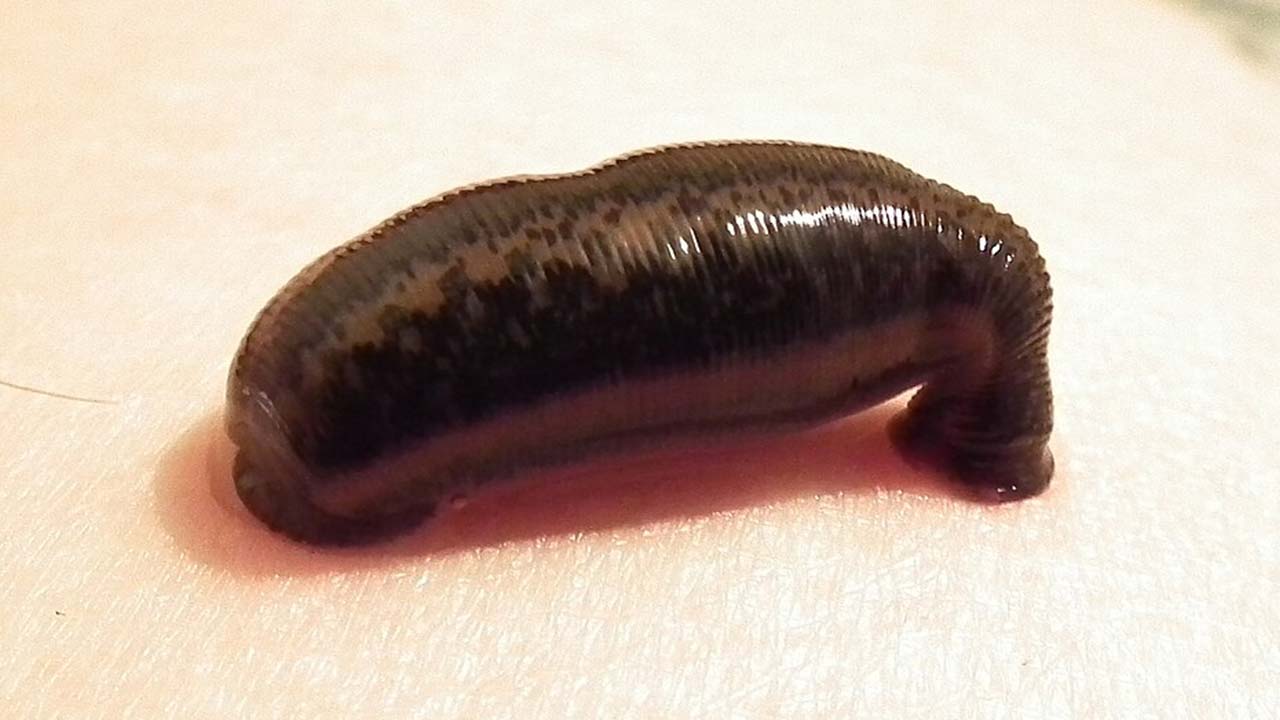
Contrary to popular beliefs, leech bites are painless, not dangerous and they do not transmit diseases. Don’t worry, they don’t jump or fly either; they inch along the ground or vegetation, which will give you ample time to avoid them if you notice their movements.
Leeches are drawn to the warmth and salt of your body. And if you won’t notice them, leeches can feed for about 20 minutes, to sometimes even up to an hour. They are active at their peak after fresh rain when the trails are wetter.
The leech activity decreases when the trail begins to dry after midday. So, in overall, leeches are minor inconveniences at best and the reputation they have far outweighs the actual harm they cause.
The Real Truth: Leeches Are Gross, Not Dangerous
-
Unlike ticks or mosquitoes, leeches don’t carry parasites or pathogens that affect humans
-
Leeches rarely cause infections unless you scratch yourself while trying to remove them or if you fail to clean the bite properly
-
Their bite may cause you to bleed more than expected, but it's due to the anticoagulant they secrete and it’s harmless
-
Leeches don’t bite through clothing; they crawl until they find exposed skin
-
They are pretty damm slow and easy to remove, there is no need for force or panic
-
There is no pain or sting involved; their saliva contains a mild anesthetic, so most people don’t even realize they have been bitten until they notice blood later
-
After a few encounters, trekkers get used to them quickly, and then they become a minor annoyance rather than a frightening factor
-
Leeches are an integral part of the ecosystem; they are not on the trail to ruin your trip, they are just doing what they do in the forest
-
With the right gear and relaxed attitude, you will find that leeches are nothing more than a rainy-season inconvenience
How to Deal With Leeches on Trek in Nepal?
If you are doing a monsoon trek in Nepal, leeches may be one of your biggest worries. If you are wondering about how to deal with leeches on trek in Nepal, you will need the right mindset, necessary gear and preparation. With these elements in synch, leeches are completely manageable.
Let’s walk through all the essentials from how to avoid leeches during trek in Nepal to post-bite care.
Wear the Right Clothes to Block Entry Points
Your first line of defense to deal with leeches on trek in Nepal is smart clothing. Leeches cannot bite through tough fabric. But, they are quite skilled at crawling into gaps. Wear long trekking pants tucked tightly into socks.
This will make it harder for leeches to climb up from your boots. You can also use high gaiters or leech socks that cover your ankles and calves. Avoid shorts or open footwear while traversing across forested trails, no matter how humid it feels.
Don’t Miss Anti-Leech Repellents
Another best remedy and answer to how to deal with leeches on trek in Nepal is to use effective repellents. If you use repellents, it will discourage the leeches from latching onto you during the trek. You can find different types of leech repellents, either with chemical or natural composition.
You can find locally made herbal oil that repels leeches without harming skin. They are available in small bottles at the trekking shops. As for porters, they use tobacco-infused water or oil, which leeches find repulsive. Likewise, spraying saltwater or Dettol-mixed water on shoes, socks and gaiters works like a charm as well.
Stay Vigilant on the Trail
While you are trekking, leeches don’t strike you like snakes. They inch forward slowly and attach when unnoticed. By staying alert and doing frequent checks, you can often catch them before they latch onto you. Stop every 30 to 45 minutes to inspect your shoes, pants and ankles.
Use the trekking poles to move the grass or leaves aside; many leeches sit on the wet foliage. Also, avoid sitting or standing still for a long time in grassy areas, especially after rain. And, cross the muddy section quickly, especially near the streams where they are most active.
Learn How to Safely Remove a Leech
During the monsoon trek in Nepal, if a leech manages to attach onto you, do not panic. Remove it calmly and correctly to minimize the bleeding and skin irritation. Do not burn it with a lighter or try to yank it off forcefully. Also, avoid pouring Dettol or alcohol directly onto it.
Instead, use your fingernail, bank card, or small stick to gently move it off sideways, not straight out. Don’t use anything for quick removal that can regurgitate the leech and increase the risk of infection. After removing the leech, clean the bite with clean water or antiseptic. Apply Betadine or Dettol and cover the wound with clean tissue.
Best Monsoon Treks in Nepal (Leech-Free or Low-Leech Zones)
Upper Mustang Trek
Duration: 14 days
Maximum Elevation: 3,840m/ 12,598ft (Lo Manthang)
Trek Difficulty: Moderate
Leech Risk: None
Ideal For: Off-beat explorers, culture lovers, desert trekkers
The Upper Mustang Trek takes you beyond the Annapurna and Dhaulagiri ranges. This trekking destination is situated in the trans-Himalayan rain shadow region. Its unique geographical location blocks monsoon clouds. So, even in the monsoon, this region receives very little to no rainfall even at the core part of the season.
Unlike the green middle hills of the country, Mustang is a high-altitude desert known for its arid landscapes, windswept cliffs, red-rock canyons and mystical caves. During monsoon, the dusty trails settle, air feels cooler and skies, though partly cloudy, are often clear.
What truly sets this trekking destination apart from other regions is its deep-rooted Tibetan Buddhist culture, centuries-old monasteries and the living museum, the medieval walled city of Lo Manthang.
Doing the Upper Mustang Trek during monsoon is not just about escaping the rain. You will enter an entirely different world, where culture from a millennium is still intact and time moves more slowly.
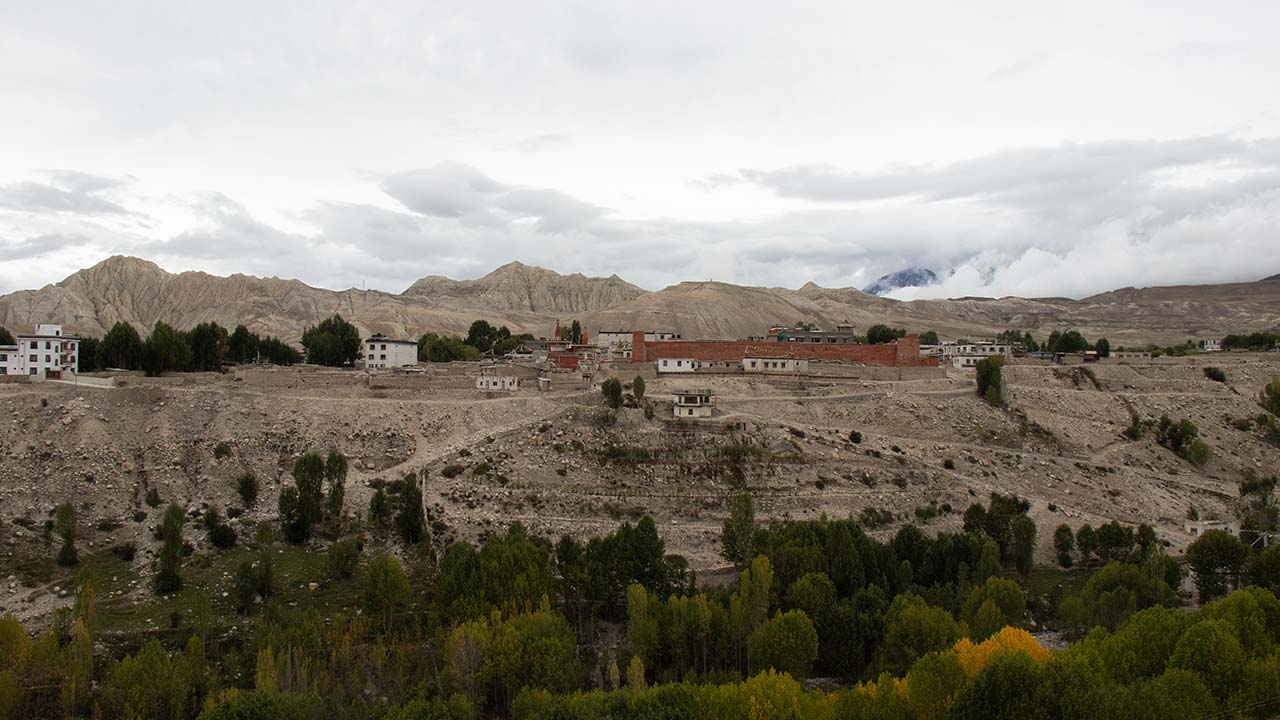
Nar Phu Valley Trek
Duration: 20 days
Maximum Elevation: 5,416m/ 17,769ft (Thorong La Pass)
Trek Difficulty: Moderate to Challenging
Leech Risk: Very Low
Ideal For: Remote trekkers, cultural enthusiasts, thrill seekers
Tucked behind the Annapurna region, Nar and Phu Valleys are other ideal monsoon trekking destinations that lie in the semi-arid corridor that is protected from heavy monsoon rain. Nar Phu Valley Trekking is one of the few treks in central Nepal that remains dry, offering occasional dramatic mountain views even during rainy seasons.
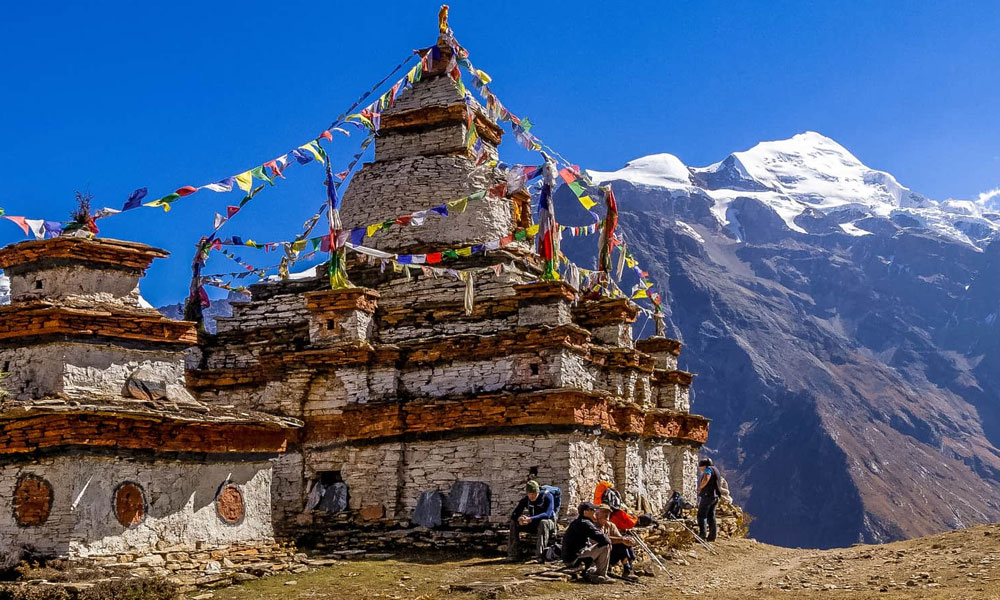
This journey is ideal for those who want to explore the off-beaten path and experience the authentic Tibetan culture-influenced villages’ life in raw and unfiltered form. Although this trek is long, the monsoon offers total peace, seamless logistics and the opportunity to truly disconnect.
As the trails are high, they are relatively free of leeches. You can also optionally connect this trekking journey with the Annapurna Circuit Trek via Kanga La or Thorong La, depending on your time schedule and fitness level.
Upper Dolpo Trek
Duration: 25 days
Maximum Elevation: 5,350m/ 17,552ft (Kang La Pass)
Trek Difficulty: Challenging
Leech Risk: None
Ideal For: Veteran trekkers, solitude seekers, cultural travelers interested in Tibetan Buddhism
Upper Dolpo Trek is the ultimate monsoon trekking destination for trekkers who crave extreme remoteness, high Himalayan wilderness and spiritual depth in their journey. Like Mustang, Upper Dolpo lies north of the Himalayan range barrier region and sees minimal rainfall even at the heart of the monsoon.
On this remote Himalayan route, you will walk across vast and empty valleys, rest near alpine turquoise lakes and cross high passes. The trail leads to Shey Phoksundo Lake, the deepest lake in Nepal, with a depth of 145 meters (476 feet).
During monsoon Dolpo region blooms with subtle alpine flora, the path is dust-free and skies are often clear in the evening, unveiling the epic mountain panoramas. However, this journey is not for casual trekkers. It is a fully supported camping-based adventure that requires careful planning and permits.
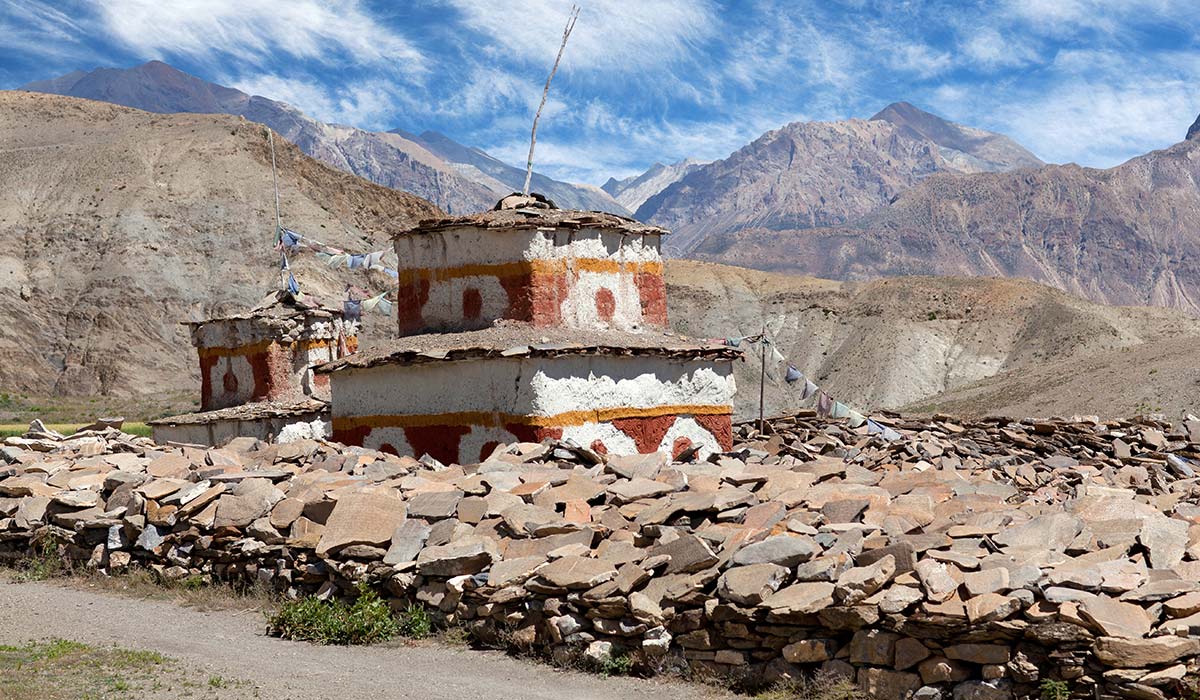
Mardi Himal Trek
Duration: 5 days
Maximum Elevation: 4,500m/ 14,763ft (Mardi Himal Base Camp)
Trek Difficulty: Moderate
Leech Risk: Low above 2,000 meters
Ideal For: Short-trek seekers, offbeat fans, solo adventurers
Mardi Himal is one of Pokhara’s best-kept secrets and monsoon is one of the best periods to hike it if you are seeking solitude and lush brimming scenery. The Mardi Himal Trek quickly climbs to an altitude of 2,000 meters. So, the leeches' risk fades in the initial part of the journey as misty ridgelines replace thick jungles.
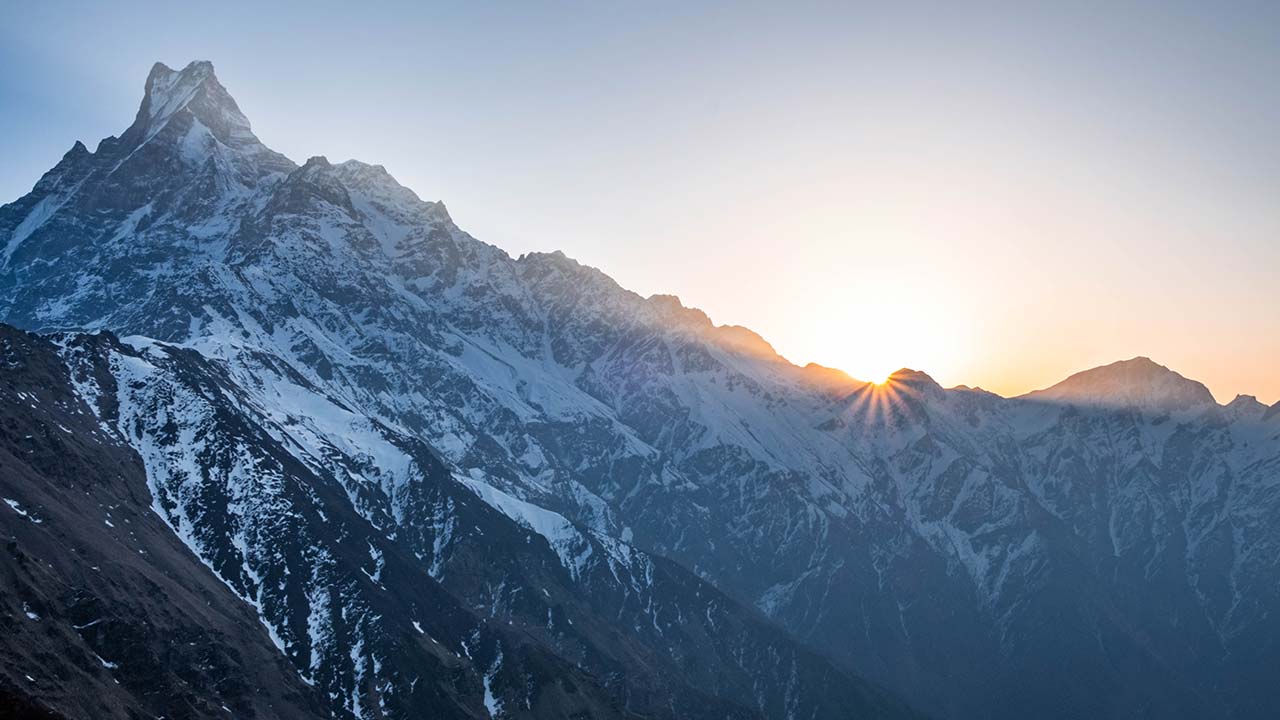
What makes the Mardi Himal Trek in monsoon shine over other destinations is the drama of the shifting weather. Clouds race over the sharp ridges, rhododendron forests are lush dripping with rain and sudden clearings offer breathtaking views of Annapurna, Machhapuchhre and Hiunchuli.
As this trek just spans across 4-5 trekking days, it is a perfect short monsoon escape that avoids lowland heat, jungle discomfort and heavy trail traffic. Moreover, as the trail is quieter in the monsoon season, you will get better accommodation and personalized attention at the teahouses.
Ghorepani Poon Hill Trek
Duration: 3 days
Maximum Elevation: 3,210m/ 10,529ft
Trek Difficulty: Easy to Moderate
Leech Risk: Moderate below Ghorepani
Ideal For: Beginner trekkers, families, culture seekers
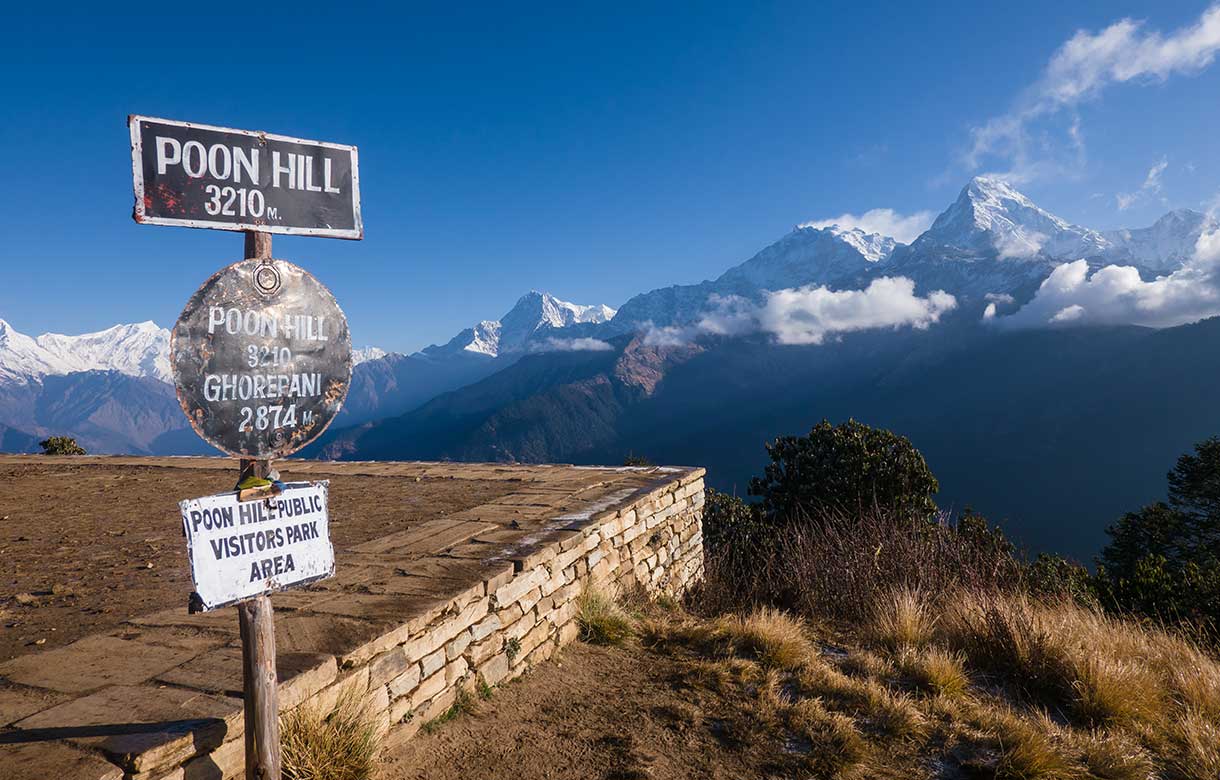
Ghorepani Poon Hill Trekking is one of the most popular short trekking routes in Nepal. While the lower forest sections can be wet and leech-prone during the early part of the monsoon, there is a small window to enjoy the journey before the heavy rain hits the hills with full force.
This comfortable trail is perfect for first-time trekkers and those who are traveling with kids or elderly members. The infrastructure along the trail is extraordinary. Villages like Ghandruk and Ghorepani are beautiful and welcoming. Terraced rice fields and forest paths are lush during this season.
Even if Poon Hill is clouded, walking across the flower-lined trails, immersive cultural stops and forest lodges is simply worth it. Pack leech socks, rain gear and try to keep your hike between 8:00 AM to 2:00 PM when the rain is usually lighter.
Other Possible Monsoon Treks in Nepal
The monsoon season in Nepal brings heavy rain and slippery trails to the most trekking regions. However, some of the classic routes can still be enjoyed with proper planning and gear. Even the mainstream trails in this low season offer lush green landscapes, fewer crowds and a quieter trail experience.
While these world-renowned trekking routes are not in the rain shadow regions, these routes are still manageable for the trekkers who are willing to embrace a bit of challenge and thrilling adventure.
